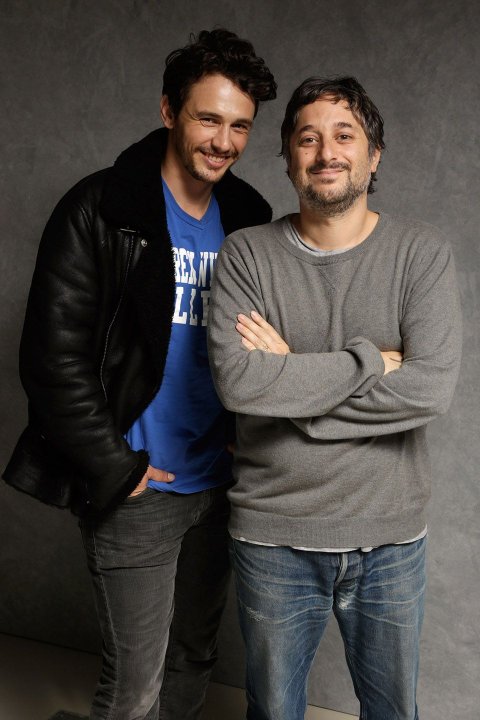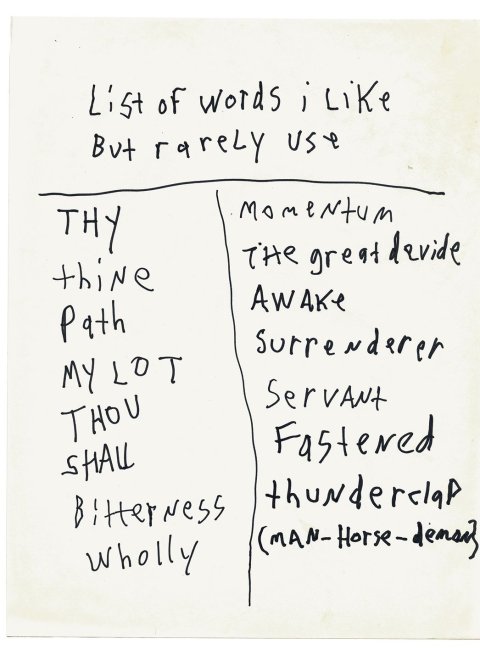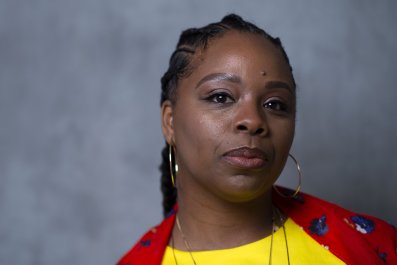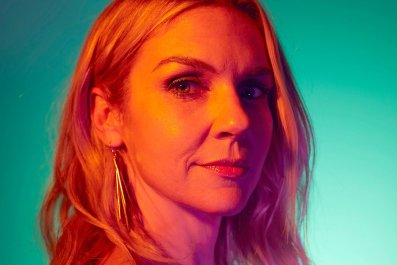Harmony Korine found his spiritual home when his family moved from a California commune to Nashville, Tennessee, in the early '80s. Sol, his father, made documentaries for PBS and would take his son along on trips to the small towns, carnivals and backwoods of the Deep South, capturing an array of vivid characters—"goldfish swallowers, moonshiners, kids who ride bulls," as Korine once described them. "I always liked that crazy part of America the most," he said, "where things are seething, everything is incongruous, it seems anything can happen."
Eccentrics, outliers and the margins of society preoccupy Korine, whose work is layered with diverse references—among them, the tragicomic slapstick of vaudeville, the writing of Southern gothic novelist Flannery O'Connor, the visions of William Blake and the vernacular of African-American art. But each work is also a portrait of the artist at that time. "In my younger years," he told the website Cultured in 2013, "I was damn near psychotic and definitely criminal, so the work reflects that."

His screenplay for Larry Clarke's controversial 1995 film Kids (about hedonistic New York teens at the height of the AIDS epidemic) was the then-22-year-old Korine's entrée into the demimonde of fashion and art. His 1997 directorial debut, Gummo, a poetically gnarly apparition—surreal, nonlinear, darkly humorous—was a disturbing portrait of poverty, drug abuse and mental illness in small-town America, as well as a Werner Herzog–ordained cult classic. (Not long after its release, David Letterman found Korine rifling through fellow guest Meryl Streep's purse and banned him from the Late Show.)
His later films, like 2013's trippy Spring Breakers and his upcoming stoner comedy, The Beach Bum (with Matthew McConaughey), flirt with the mainstream (and maturity) without sacrificing the epically strange.
Korine has been compulsively creating art since junior high school, all of it interconnected: journals, fanzines, books, paintings, photography, films, commercials (with designer Raf Simons) and music videos (for artists as diverse as Sonic Youth and Rihanna). Most of it is included in his first monograph, Harmony Korine (Rizzoli, $45), released in late July. And on September 11th, his latest show, "Blockbuster," will open at the Gagosian Gallery in New York (the Madison Avenue location).
We emailed a few questions to the artist—now 45 and living in Florida with his wife, Rachel, and their two children. His answers are predictably unexpected.

What's the story with the image above, that opens the chapter "Personal Mythology"?
i made it while stoned in my grandmother basement [in Queens]. i was living there and every day i would make a new outgoing message for the answering machine. nobody ever called or heard the messages but it always made me feel good to make one. i made that piece of art after eating a can of goya beans.
How has what you call your "personal and consuming mythology" evolved over the years?
i mostly wake up and go fishing. i walk to the bar in key largo and play electronic poker. on a good day i will skateboard on the pier and watch the cuban magician swallow fish. im working on keeping this routine every day.
You write of "creating a path to supernatural communication that reaches beyond a magical reality." What does that mean exactly?
mostly i close my eyes and work. i ride a dirt bike to the store and buy some spam. i reach to the highest power and get motivated by the jewish wrestling team that practices next door. it manifests everywhere i look.

You say the South deeply influenced your work. How so?
its where i grew up. i lived in a barn with spray paint on the side. i would throw a tennis ball at the broken satellite dish to keep me busy. it was all around me growing. i loved it.
How is your new movie, The Beach Bum, different from previous films?
i guess i just listened to jimmy buffett a lot while i made the movie. i lived in a houseboat next to a klepto. its different because it's completely different than all the other films.
















